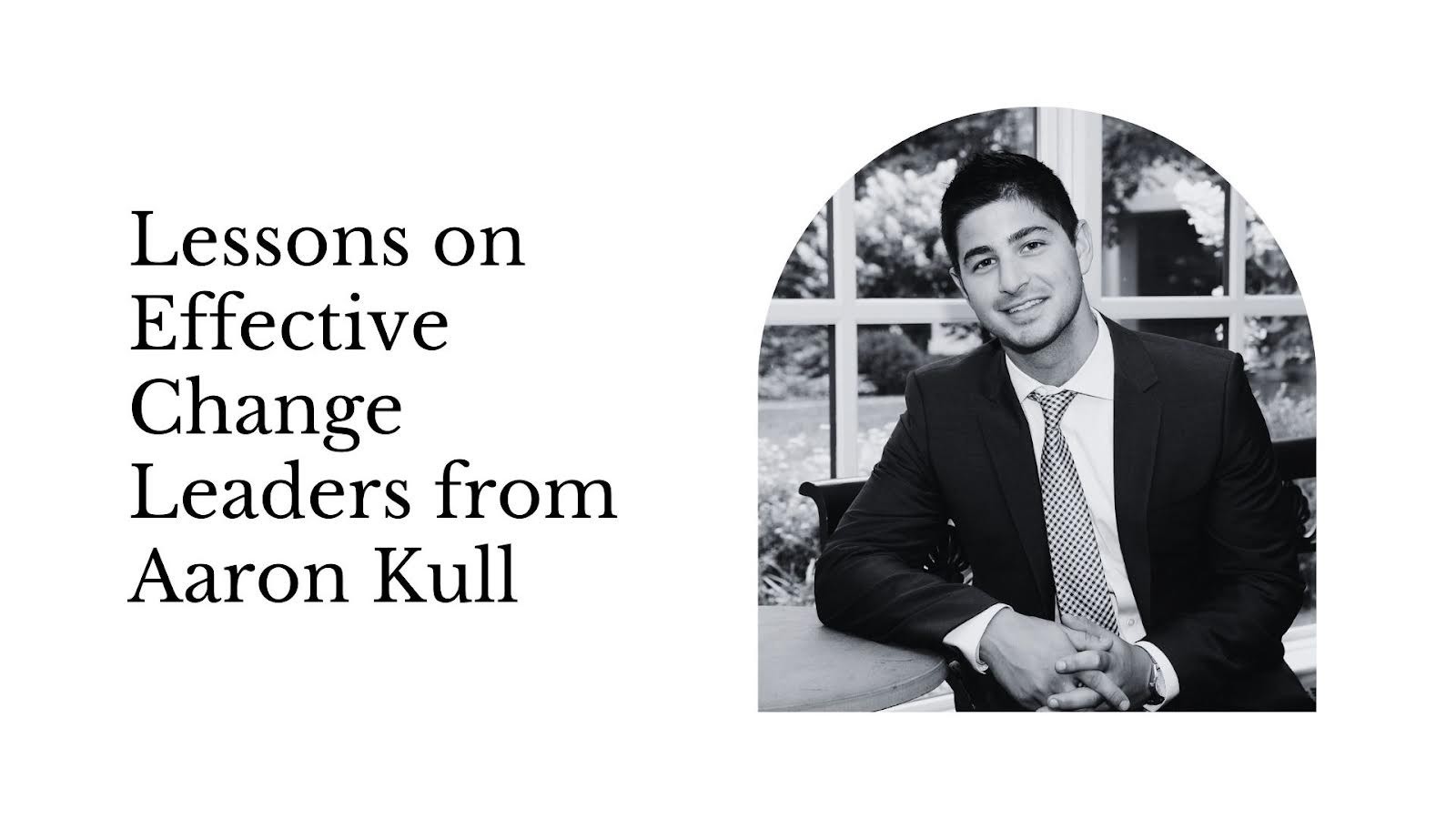Lessons on Effective Change Leaders from Aaron Kull
While many consultants and new executive come in with a strong desire to effect change, many bold new initiatives end up falling flat. Why? Because leaders often overlook the true human cost of change, said leadership expert Aaron Kull.
As a healthcare executive, entrepreneur, and consultant, Kull has successfully guided several companies through the chaotic winds of change. From his perspective, the most common error that leaders make is undervaluing the cost that new technology, organizational structures, or goals have on existing employees and the underlying relationships and processes that serve as the backbone of business operations.
“One of the most important things to consider from a forward-thinking standpoint is your people,” he said. “A lot of the things that we do as consultants look great on paper but require a heavy lift from a change management standpoint, and that has a huge impact on people. That’s one of the things can be underestimated if not totally overlooked. It’s just as true in companies where I’ve had leadership positions that were more owner-operator in nature. You have to ask questions like, ‘How is this change going to impact the people that are actually doing the work?’”
It’s not simply that people don’t like change, he added. Most employees have a laundry list of changes they’d like to see implemented. They’re pro-change. It’s that change is difficult. It complicates even mundane parts of a job. Tasks and procedures that employees once handled on auto-pilot may suddenly require a decent amount of cognitive effort, which zaps energy and can reduce output in other areas.
All of this change fatigue can hurt organizations. When employees use have to transition to new software, reporting duties, and goals, there is a mental cost that is born individually instantly, but doesn’t show up collectively until time has passed, Aaron Kull said.
That means leaders who aren’t attuned to managing change can overlook warnings. Change can cause burnout, low morale, and intrapersonal conflicts, all of which are often hidden from new managers. Instead, employees often continue their work without a lot of complaining and silently begin to update their resumes.
“It’s not going to happen tomorrow. It’s going to happen as these people either become slowly satisfied or dissatisfied with the change and the impact is probably going to be felt months down the line,” Aaron Kull said. “That’s when you will start to see attrition and the cost and need of training new staff and things of that nature.”
Losing employees in the middle of important changes is a body blow to any business. Not only do departing employees take years of institutional knowledge and core competencies with them, their replacements have to be trained to operate in a new system that few have mastered.
It also increases the transitory period, meaning that leaders who often underestimate the output lag that new systemic changes cause within organizations.
Importantly, leaders can manage change fatigue, Aaron Kull said. But it takes extra work. The best option in a leader’s toolkit is psychology. Ensuring employees are managing change well is important. The next most-important tool is foresight.
“I really try to think ahead to what the reception of the change is going to be by those impacted by the change,” he said. “Now, there’s a whole number of other factors, too, that you should consider when you introduce other elements. When you think about technology and what technology will cost and what it might take to implement, what parallel work streams are happening and how they might converge down the line, how an upgrade on one system might break another system that we’re thinking about putting in. So, from a technology standpoint, you really have to look pretty far down the line to understand where your conflicts and incongruences are going to emerge. And that’s certainly something that we think about as we go through change.”
Considering the ramifications months down the line can help employees weather the chaos of change. If employees understand that they will have to endure the short-term shocks and annoyances that arise from implementing new software, but that it will simplify other parts of their job later, it can make it easier to get through the transitionary period.
Aaron Kull also recommends that leaders stay very alert to subtle signs that burnout, low morale, and change fatigue are creeping into the office. Because leaders tend to be siloed, even against their best intentions, any faint whispers of grumblings should be taken seriously.
Once a bad attitude has taken hold in an office, it spreads like a virus through employees. One bad apple infects the rest, leaving a wake of unproductive, unhappy workers and poor performances in its wake. “It’s an iceberg,” Aaron Kull said. “Whatever you think you know, you’re seeing the top 20 percent, but there’s 80 percent more lurking down below.” Paying attention to signs that something is wrong can prevent the infection from taking hold.

